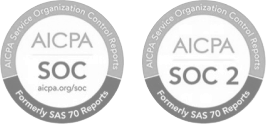Remote infrastructure management (RIM)
Article Navigation
What Is Remote Infrastructure Management (RIM)?
Remote Infrastructure Management (RIM) refers to the process of monitoring, managing, and maintaining an organization’s IT infrastructure remotely—including servers, networks, storage systems, and applications. RIM services ensure uninterrupted business operations by providing real-time monitoring, proactive maintenance, and incident resolution from centralized or offshore locations.
Evolution of RIM in Modern IT Environments
As organizations shift toward cloud, hybrid, and edge computing, the traditional on-premises IT management model has evolved. Modern RIM combines automation, AI-driven analytics, and global service delivery to enhance performance and reduce downtime across distributed infrastructure environments.
Importance of Remote Infrastructure Management
RIM is essential for maintaining operational resilience, scalability, and security. For global enterprises, it minimizes dependency on local IT teams, ensures business continuity, and supports round-the-clock infrastructure visibility through advanced monitoring tools and automation frameworks.
Core Components of RIM
- Network Management: Real-time monitoring, troubleshooting, and optimization of LAN/WAN performance.
- Server & Storage Management: Proactive maintenance, capacity planning, and virtualization support.
- Database Administration: Backup, tuning, and disaster recovery for mission-critical data systems.
- Desktop & End-User Device Management: Remote patching, configuration, and user support.
- Security & Compliance Monitoring: Threat detection, access control, and audit reporting.
- Application Support & Maintenance: Continuous monitoring of application uptime and performance.
Mercans’ managed infrastructure services integrate all these functions into a unified, secure, and automated delivery model.
How RIM Works
RIM leverages remote monitoring tools and intelligent dashboards to provide end-to-end visibility across infrastructure components.
- Remote Monitoring & Automation: AI-powered analytics detect anomalies before they cause disruptions.
- Incident Detection & Resolution: Automated alerts and escalation frameworks ensure minimal downtime.
- Performance Reporting: Continuous tracking of SLAs, KPIs, and compliance metrics.
- Integration & Orchestration: RIM solutions connect seamlessly with existing ITSM and cloud environments.
Benefits of Remote Infrastructure Management
- 24/7 Monitoring & Faster Resolution: Continuous oversight ensures rapid issue detection and response.
- Cost Efficiency & Reduced Downtime: Consolidated monitoring reduces operational overheads.
- Access to Skilled IT Expertise: Global teams deliver high-level technical support and best practices.
- Enhanced Scalability & Flexibility: Easily adapt to infrastructure growth or workload changes.
- Improved Compliance & Security: Centralized governance enforces policy, data protection, and audit control.
Mercans’ RIM model combines cloud-native automation, predictive analytics, and secure connectivity, delivering measurable efficiency gains for enterprises worldwide.
Challenges in RIM
While RIM offers extensive benefits, organizations must address:
- Data Privacy & Security Risks: Ensuring secure data exchange between remote management centers.
- Network Dependency: Performance is linked to stable and redundant connectivity.
- System Integration Complexity: Bridging legacy and cloud infrastructure.
- Vendor Oversight: Managing service quality, SLAs, and multi-vendor dependencies.
- Cross-Border Compliance: Meeting GDPR and local data-residency requirements across geographies.
Mercans’ ISO-certified security framework and geo-compliant infrastructure architecture mitigate these risks through strong encryption, monitoring, and regulatory alignment.
RIM Delivery Models
- Fully Managed Services: Outsource end-to-end IT infrastructure management.
- Co-Managed / Hybrid Models: Combine internal IT control with external expertise.
- Cloud-Based Infrastructure Management: Manage hybrid or multi-cloud environments remotely.
- Multi-Tenant vs Dedicated Models: Choose between shared or client-exclusive management resources.
Technologies Enabling RIM
- Artificial Intelligence for IT Operations (AIOps) – predictive analytics and self-healing automation.
- Remote Monitoring & Management (RMM) Tools – real-time visibility and control.
- IT Service Management (ITSM) Platforms – ticketing, workflow, and SLA automation.
- Cloud Infrastructure Management Tools – unified dashboards for multi-cloud ecosystems.
- Automation & Orchestration Software – enabling zero-touch maintenance.
Mercans integrates these technologies into a single SaaS platform, enabling clients to monitor, optimize, and secure global infrastructure from anywhere.
Use Cases
- Enterprise IT Operations Management
- Managed Service Providers (MSPs) offering outsourced IT services
- Hybrid & Multi-Cloud Infrastructure Monitoring
- Disaster Recovery & Business Continuity Support
Mercans’ RIM solutions help global enterprises manage distributed data centers, cloud systems, and networks through centralized visibility and proactive management.
Future of RIM
- Integration with Edge & Cloud Computing for seamless hybrid management.
- AI & Predictive Analytics to forecast performance issues before they occur.
- Zero-Touch Infrastructure Management powered by full automation.
- Autonomous Operations driving cost optimization and continuous compliance.
Mercans Insight
Mercans combines remote infrastructure management, cloud automation, and AI-enabled monitoring to deliver reliable, compliant, and scalable IT operations across 160+ countries. Whether managing enterprise data centers, hybrid clouds, or global payroll platforms, Mercans ensures that every system runs securely, efficiently, and without interruption.































 Back
Back